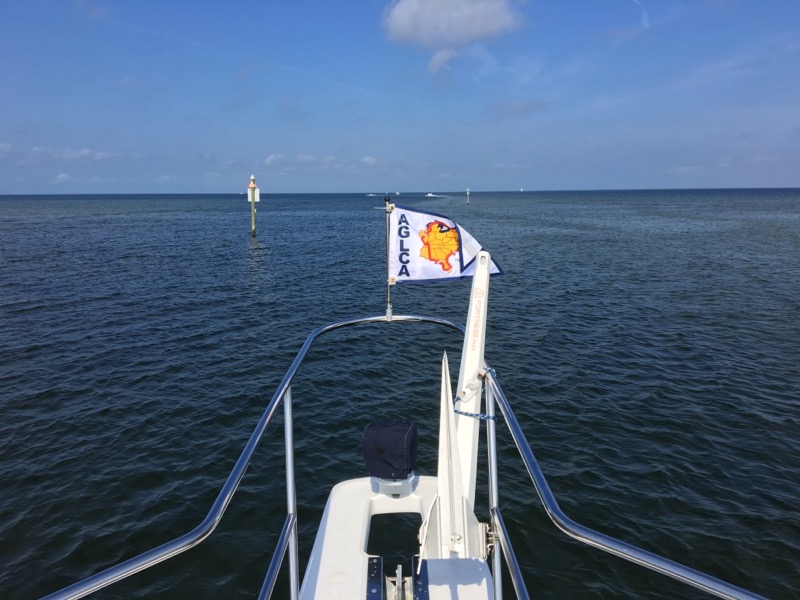
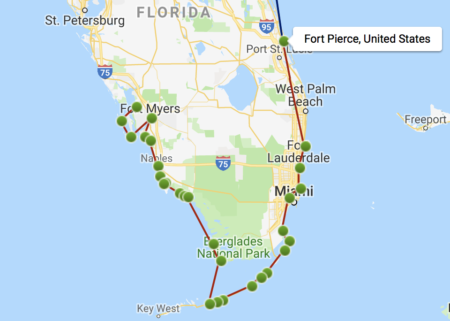
Last month we toasted a year of owning our motor yacht Y-Not (a Bayliner 4788).
And this week, we nod our heads to remember shoving off from Punta Gorda, FL to start our American Great Loop Adventure after spending several weeks learning our boat systems, getting training and deciding we were ready for our first short transit.
How far have we come?
To date, we have cruised 477 nm (nautical mile = 1.15 statute/land miles). If we consider the Great Loop to be a 6,000 mile adventure – we’ve completed roughly 8% of it.
At this pace, we should be done in what, 10-12 years?
In a quick video, we re-capped our first year – explaining why we’re going so slow and some of our first year expenses in fuel & marinas:
So, why are we going so slow?
Well, mainly because we want to.
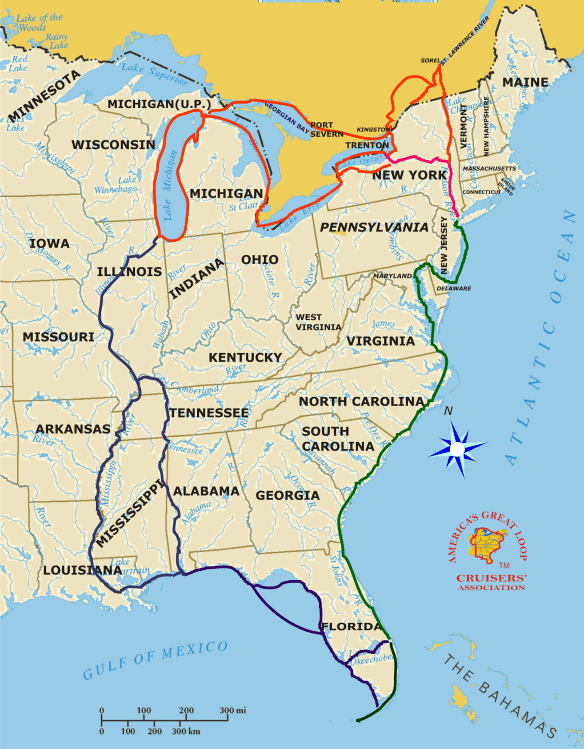
The Loop can be done at any pace – but many who want to get it done as one adventure tend to follow the seasons to optimize the adventure. There are definite better times to be in different quadrants of the Loop.
South in the winter, east coast in spring, north in summer (the Erie Canal, for example, doesn’t even open until mid-May) and the inland rivers in the fall.
If you don’t match the seasons, then you can be left on a boat in less than ideal conditions. Such as in Florida for hurricane season (ahem). Or Canada in winter (brrrrr).
But if you do match the seasons, the Loop is often done in a year or less. And for many, that’s what they set out to do – one big grand adventure. A gap year. A retirement celebration.
But that’s not us.
6000 miles doesn’t seem like a far distance. That’s a typical yearly pace for us in an RV, traveling at 55-60 mph and getting about 7-7.5 miles to the gallon.
When boating you’re typically traveling at 6-8 knots, and we’re burning about 2 miles to the gallon.
In our estimation, a 6000 mile boat trip is about equivalent in travel time and fuel consumption to about a 20-40k mile RV trip.
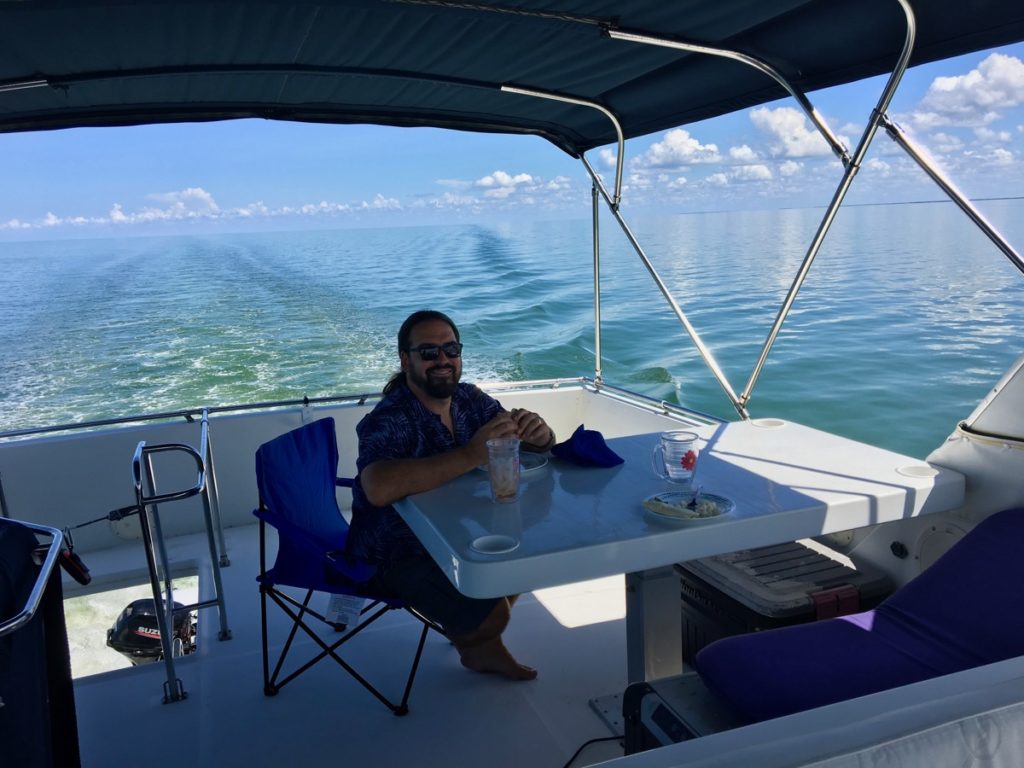
After 12 years on the road, we’re just not up for keeping that kind of pace. Heck, we’ve NEVER traveled more than 13,000 RV miles in a year – and that pace was not sustainable.
We know we can’t travel, explore the places we visit, get in work hours and have personal time – and stay sane. Why spend that much money in short term marina stays & fuel just to exhaust ourselves?
We just simply want more stays measured in weeks, not days. More time to relax, play, get to know new cities & people and have time to deal with life.
We are perpetual nomads afterall – travel is our daily life. We’re not trying to complete an extended adventure before we get back to normal life.
Our looping will look more like extended cruising seasons that generally are following the Great Loop circuit (with side trips along the way). When we get up north, our boating seasons will be shorter due to weather – and we want to spend multiple summers exploring.
So we’ll be returning to our beloved RV parked in the south for our winters.
Our best guess is that our loop will take 5 or so years (the longer we’re on the boat, the more we extend that.)
How are the Costs Measuring Up?
We get a lot of questions about how the costs of boating compare to the costs of RVing. Quite honestly, we just don’t have enough miles traveled yet by boat to have usable numbers.
Which seems weird to say after a year – but 477 nms on a 440 gallon fuel tank just doesn’t give us a lot of data to work with.
We have topped up the tanks twice since we left Punta Gorda, but the numbers get especially blurry when we factor in generator run time (also pulls off the same tanks). And we had many extra hours on the generator post Hurricane Irma. As best we can tell, our 12.5 kWh generator should be around .7 – 1 g/h.
Here are our working numbers so far – but I wouldn’t suggest making any budget plans off of these numbers:
Fuel
-
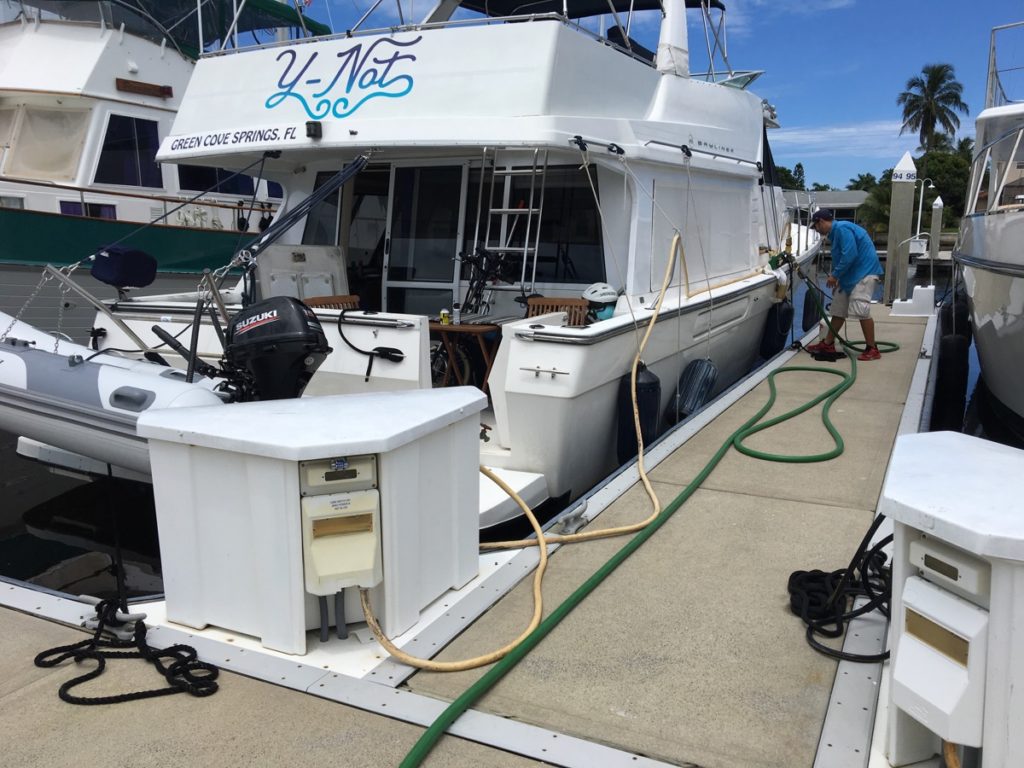
Fuel Delivery to our Slip! Engine Hours: 78 hrs (the starboard is actually a bit less due to the channel marker incident, we ran the port only for a few hours)
- Generator hours: 214 hrs
- Gallons Purchased: 320 ($852)
- Estimated Engine Burn Rate: 3.199 gallons/hr or 1.99 nm per gallon
- Estimated daily fuel costs: $4.13
We fully anticipate seeing these averages go up as we get more miles and fuel fills, and we’re keeping close track of our numbers.
We may even install a floscan at some point. Based on reports by other Bayliner 4788 owners, we should be anticipating closer to 4 gph at our cruising speeds for our dual diesel Cummins 370s.
Marina
-
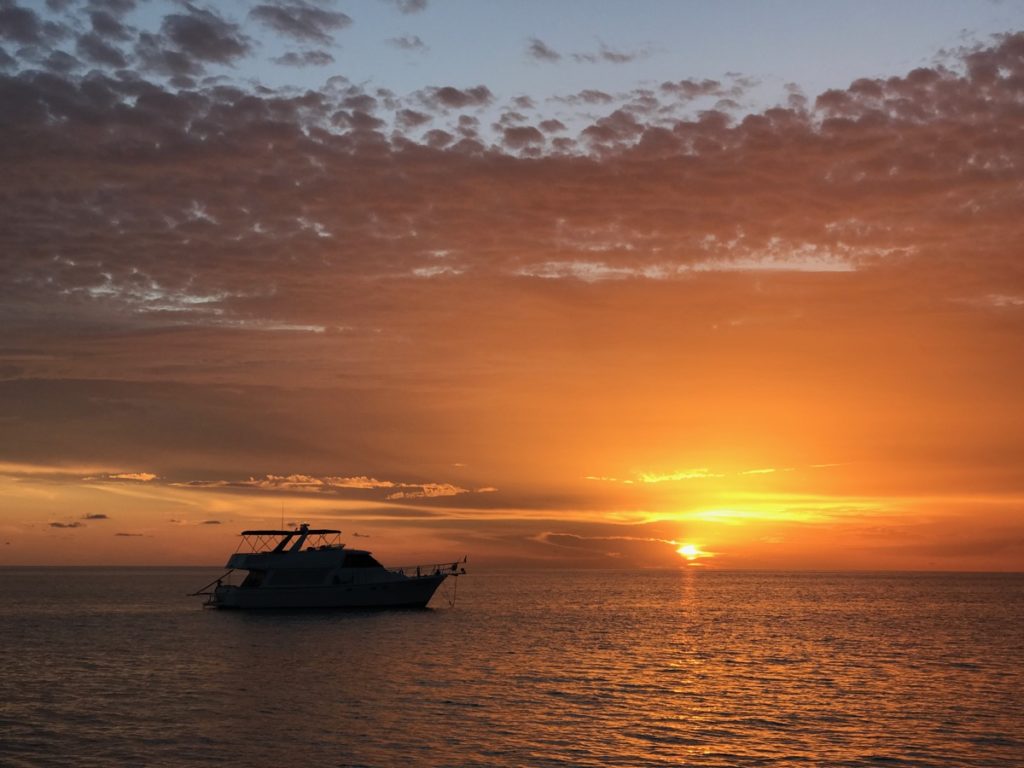
We intend to do a lot more anchoring out in the future! Free is priceless! Nights in a marina (not including ‘wet storage’): 242
- Anchored nights (aka ‘boat boondocking’): 25
- Average Nightly Rate: $28.58
While we’ve had a few single nights at marinas (super pricey at $100-150 per night), and a weekly stay ($50/night) – most of our marina stays have been monthly rates ($600-1400/month).
After our boatyard time in Miami we were left with few options but to store in the area in a wet slip at an ‘in season South Florida’ rate of $28/ft (so that we could reposition our RV out to Texas for the RV Entrepreneur Summit).
We’ll probably see rates like that in the future – but hopefully in super cool locations that we choose. But we anticipate that our marina rates will be on the lower end of the scale more of the time (and we’ll anchor out more) and that number should come down.
For comparison, in 2016 we averaged $7/day for fuel and $17/night in our RV.
Since we’re pacing ourselves, it’s our hopes that our fuel & marina costs will average out to be fairly in line with our RVing lifestyle. But of course, maintenance & storage costs is where the big differences will be.
So there ya go! Hopefully by this time next year we’ll have done more than another 8% of the Loop and we’ll have more accurate numbers to share with you.
But for now… Happy Loopiversary! Thanks for coming along for the journey.

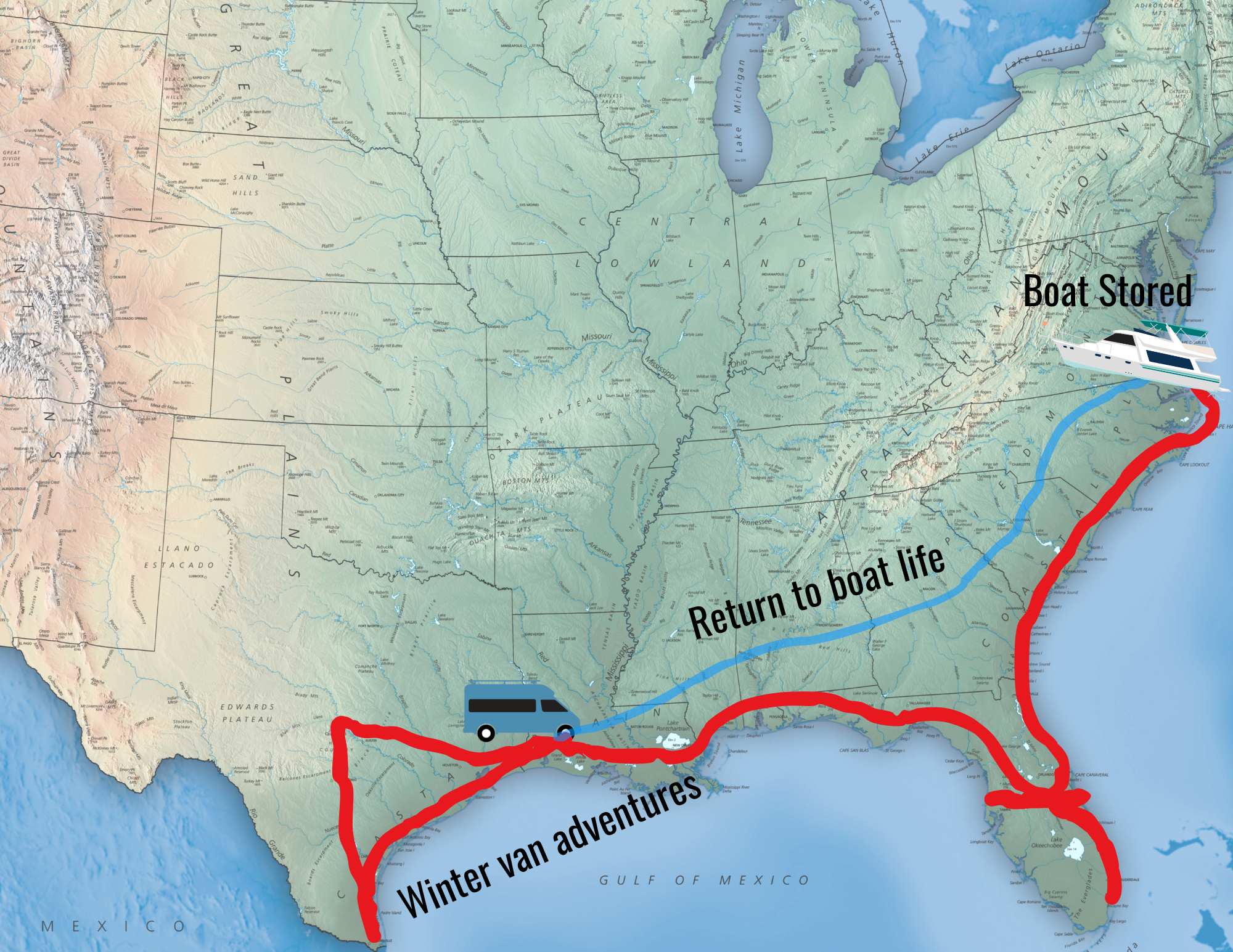
Thank you for sharing your knowledge and experience! I’ve been a fan for years – since we started researching becoming full-time RVers several years ago. You helped us solve some issues like mail, ATM fees and mobile internet, of course. Thanks! We enjoyed RV life for 3+ years and are getting ready to start the Loop in southwest Florida. Excited! We sold our house years ago, so we have an RV, two vehicles, and will soon have a trawler. Did you find an insurance company that will combine coverage? Thanks again for sharing!
No.. all our insurance is separate policies.
love what ive seen and heard from you all–just found you today–you are living the life i dream of and hope to have one day. question how do you find places to fuel and stay on the waters–before hand or just when ever. we want to run the rivers here or coast mainly and was wondering how to find places to fuel and dump–thanks susan
We use a combo of Waterway Guides and Active Captain
It’s only living the dream if it’s your dream you’re living so keep doing it your own way! Looking forward to more water adventures.
Hey guys, In both of your vehicles (bus, boat) how do you address possible carbon monoxide gas issues; do you use multiple carbon monoxide detectors ? If so could you share what works for you i.e., placement, and type or brand that you might recommend also any actual events or problems that you’ve encounted in the past.
On your boat it looks like the propeller drive shafts and props are completely exposed, is there any modifications out there that can be installed to protect your shafts and props on your Baylinner ?
You’ve mentioned that you’ve only traveled 8% of the loop and you already hit something that damaged your exposed drive shafts. I would imagine the dollar cost of that mishap was very expensive not only in dollars but time lost, thank god you were close to shore when the incident occurred. Unfortunately there’s a lot of junk drifting around out there.
Thanks so much for sharing your nomadic journeys.
Tony
Yes, we use detectors… just standard stuff (nothing specific to share or recommend), haven’t had any incidents. And have not heard of any modifications that are feasible for protecting a dual engine design like this, just one of the many trade offs in boat-type.
So fun! We’re hoping to break into RVing next year, but now you’re making me want to go out and get a boat. Thanks for sharing some of the details re: cost – very important for people like us as we’re still in the planning stages. I also like the idea of slower travel, to take time and enjoy the moments without feel rushed.
Thanks for sharing some of the details re: cost – very important for people like us as we’re still in the planning stages. I also like the idea of slower travel, to take time and enjoy the moments without feel rushed.
How fun for you! I like that you combine your adventures with the plethora of tech information you provide. Certainly not boring that way! Hope you run in to some good friends of ours also working their way (slowly) up from Fl to Solomons Island, MD. Ann & Mike – their boat is Traveling Soul (52 ft Jefferson Marquessa). Fair winds and following seas!
Thank you, we’ll keep an eye out for Traveling Soul.. sounds like they’re on a similar pace and route as us.
Enjoyed the update. I look forward to each post. Wishing you both & Kiki smooth sailing.
Thank you for coming along for the ride with us!
I agree that slow travel is MUCH more enjoyable. No need to rush when full-timing. (Except to get to scheduled events, of course.)
Indeed.. and one reason we try to minimize the number of scheduled events on our calendar.
Congrats on the Loopiversary and thanks for all you do to help us non-techies stay mobile!
Our pleasure.. thanks for being here and coming along for the ride, while you pursue your own!